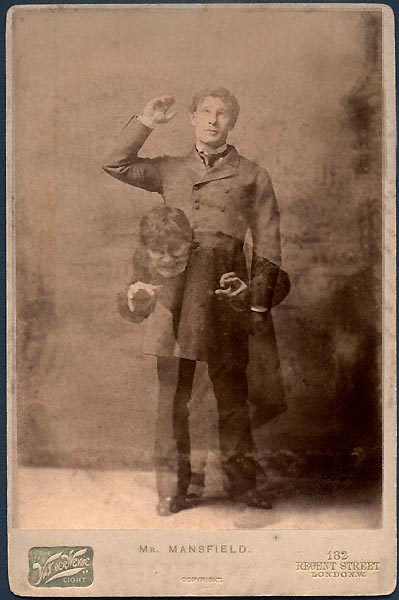|
Henry Pym
Dr. Henry Jonathan "Hank" Pym () is a fictional character appearing in American comic books published by Marvel Comics. Created by penciller Jack Kirby, editor-plotter Stan Lee and writer Larry Lieber, the character first appeared in ''Tales to Astonish'' #27 (January 1962). The character, a scientist that debuted in a standalone science-fiction anthology story, returned several issues later as the original iteration of the superhero Ant-Man with the power to shrink to the size of an insect. Alongside his crime-fighting partner-wife, Janet van Dyne, he goes on to assume other superhero identities, including the size-changing Giant-Man and Goliath; the insect-themed Yellowjacket; and briefly the Wasp. He is a founding member of the Avengers superhero team as well as the creator of the robotic villain, Ultron. Debuting in the Silver Age of Comic Books, Hank Pym has since been featured in several Marvel-endorsed products such as animated films, video games, and television series. M ... [...More Info...] [...Related Items...] OR: [Wikipedia] [Google] [Baidu] |
Alter Ego
An alter ego (Latin for "other I", " doppelgänger") means an alternate self, which is believed to be distinct from a person's normal or true original personality. Finding one's alter ego will require finding one's other self, one with a different personality. The altered states of the ego may themselves be referred to as ''alterations''. A distinct meaning of ''alter ego'' is found in the literary analysis used when referring to fictional literature and other narrative forms, describing a key character in a story who is perceived to be intentionally representative of the work's author (or creator), by oblique similarities, in terms of psychology, behavior, speech, or thoughts, often used to convey the author's thoughts. The term is also sometimes, but less frequently, used to designate a hypothetical "twin" or "best friend" to a character in a story. Similarly, the term ''alter ego'' may be applied to the role or persona taken on by an actor or by other types of performers. Or ... [...More Info...] [...Related Items...] OR: [Wikipedia] [Google] [Baidu] |
Secret Defenders
The Defenders are a set of superhero groups with rotating membership appearing in American comic books published by Marvel Comics. They are usually presented as a "non-team" of individualistic "outsiders" who, in their prior adventures, are known for following their own agendas. The team often battle mysticism, mystic and supernatural threats. Its original incarnation was led by Doctor Strange and included Hulk, Namor, and—eventually—Silver Surfer. They first appeared as the Defenders in ''Marvel Feature'' #1 (Dec. 1971). The group had a rotating line-up from 1972 until 1986, with Dr. Strange and the Hulk being usually constant members along with a number of other mainstays such as Valkyrie (Marvel Comics), Valkyrie, Nighthawk (Marvel Comics), Nighthawk, Patsy Walker, Hellcat, Gargoyle (comics), Gargoyle, Beast (comics), Beast, the Daimon Hellstrom, Son of Satan and Luke Cage, and many temporary members. The publication was retitled near the end of the run as ''The New Defend ... [...More Info...] [...Related Items...] OR: [Wikipedia] [Google] [Baidu] |
Anthology
In book publishing, an anthology is a collection of literary works chosen by the compiler; it may be a collection of plays, poems, short stories, songs or excerpts by different authors. In genre fiction, the term ''anthology'' typically categorizes collections of shorter works, such as short stories and short novels, by different authors, each featuring unrelated casts of characters and settings, and usually collected into a single volume for publication. Alternatively, it can also be a collection of selected writings (short stories, poems etc.) by one author. Complete collections of works are often called "complete works" or "" (Latin equivalent). Etymology The word entered the English language in the 17th century, from the Greek word, ἀνθολογία (''anthologic'', literally "a collection of blossoms", from , ''ánthos'', flower), a reference to one of the earliest known anthologies, the ''Garland'' (, ''stéphanos''), the introduction to which compares each of its ... [...More Info...] [...Related Items...] OR: [Wikipedia] [Google] [Baidu] |
Science-fiction
Science fiction (sometimes shortened to Sci-Fi or SF) is a genre of speculative fiction which typically deals with imaginative and futuristic concepts such as advanced science and technology, space exploration, time travel, parallel universes, extraterrestrial life, sentient artificial intelligence, cybernetics, certain forms of immortality (like mind uploading), and the singularity. Science fiction predicted several existing inventions, such as the atomic bomb, robots, and borazon, whose names entirely match their fictional predecessors. In addition, science fiction might serve as an outlet to facilitate future scientific and technological innovations. Science fiction can trace its roots to ancient mythology. It is also related to fantasy, horror, and superhero fiction and contains many subgenres. Its exact definition has long been disputed among authors, critics, scholars, and readers. Science fiction, in literature, film, television, and other media, has become po ... [...More Info...] [...Related Items...] OR: [Wikipedia] [Google] [Baidu] |
Penciller
A penciller (or penciler) is an artist who works on the creation of comic books, graphic novels, and similar visual art forms, with a focus on the initial pencil illustrations, usually in collaboration with other artists, who provide inks, colors and lettering in the book, under the supervision of an editor. In the American comic book industry, the penciller is the first step in rendering the story in visual form, and may require several steps of feedback with the writer. These artists are concerned with layout (positions and vantages on scenes) to showcase steps in the plot. Tools and materials A penciller works in pencil. Beyond this basic description, however, different artists choose to use a wide variety of different tools. While many artists use traditional wood pencils, others prefer mechanical pencils or drafting leads. Pencillers may use any lead hardness they wish, although many artists use a harder lead (like a 2H) to make light lines for initial sketches, then turn t ... [...More Info...] [...Related Items...] OR: [Wikipedia] [Google] [Baidu] |

